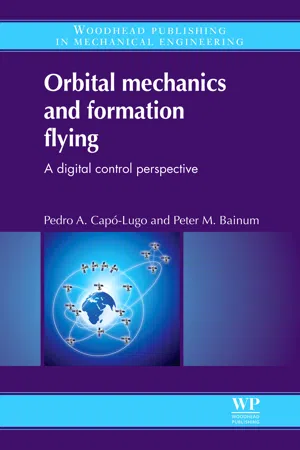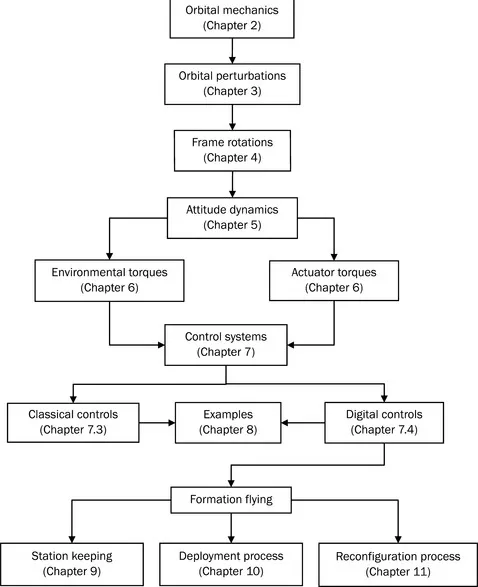
Orbital Mechanics and Formation Flying
A Digital Control Perspective
- 438 pages
- English
- ePUB (mobile friendly)
- Available on iOS & Android
About This Book
Aimed at students, faculty and professionals in the aerospace field, this book provides practical information on the development, analysis, and control of a single and/or multiple spacecraft in space. This book is divided into two major sections: single and multiple satellite motion. The first section analyses the orbital mechanics, orbital perturbations, and attitude dynamics of a single satellite around the Earth. Using the knowledge of a single satellite motion, the translation of a group of satellites called formation flying or constellation is explained. Formation flying has been one of the main research topics over the last few years and this book explains different control approaches to control the satellite attitude motion and/or to maintain the constellation together. The control schemes are explained in the discrete domain such that it can be easily implemented on the computer on board the satellite. The key objective of this book is to show the reader the practical and the implementation process in the discrete domain.
- Explains the orbital motion and principal perturbations affecting the satellite
- Uses the Ares V rocket as an example to explain the attitude motion of a space vehicle
- Presents the practical approach for different control actuators that can be used in a satellite
Frequently asked questions
Information
Introduction
1.1 Introduction to the book
1.2 Book division

1.3 References
Two body orbital motion
Abstract:
Table of contents
- Cover image
- Title page
- Table of Contents
- Copyright
- Dedication
- List of figures
- List of tables
- List of symbols
- Acknowledgements
- Preface
- About the authors
- Chapter 1: Introduction
- Chapter 2: Two body orbital motion
- Chapter 3: Orbital perturbations in the two body motion
- Chapter 4: Frame rotations and quaternions
- Chapter 5: Rigid body motion
- Chapter 6: Environmental and actuator torques
- Chapter 7: Continuous and digital control systems
- Chapter 8: Example
- Chapter 9: Formation flying
- Chapter 10: Deployment procedure for a constellation
- Chapter 11: Reconfiguration procedure for a constellation
- Appendix: Formulae relating to orbital mechanics
- Index